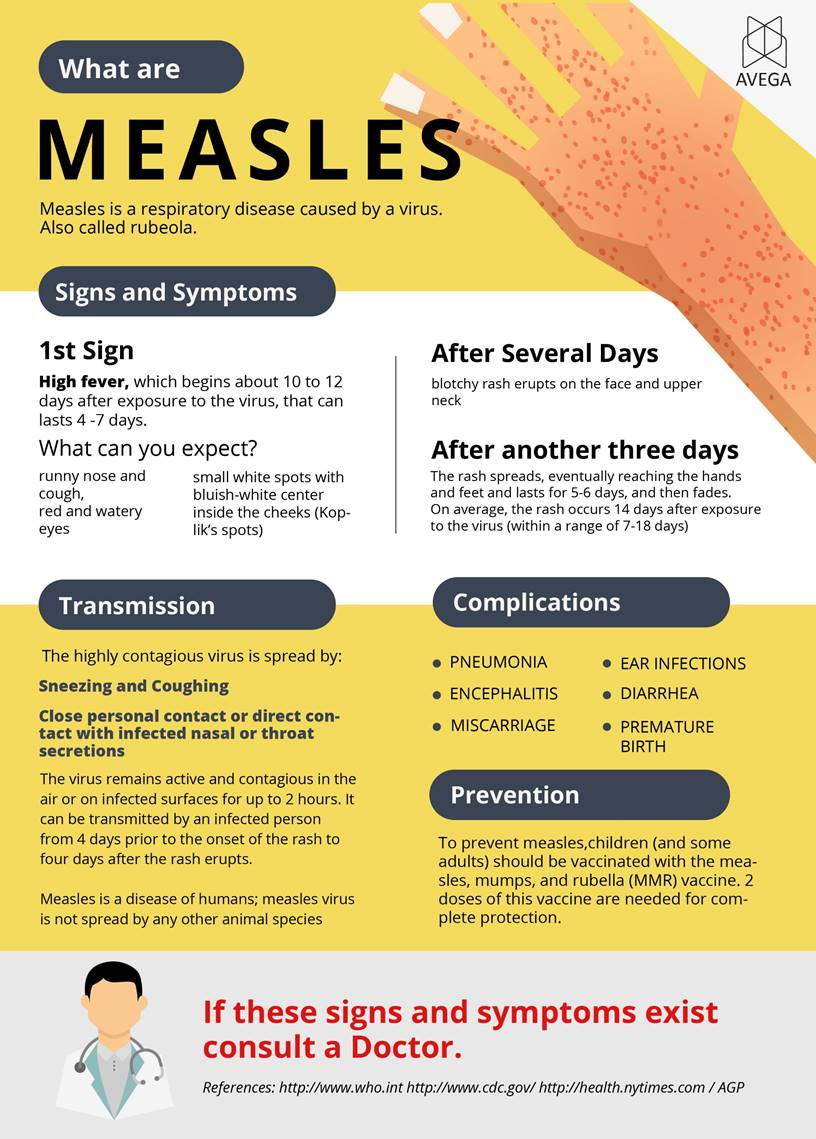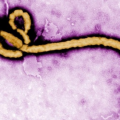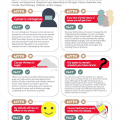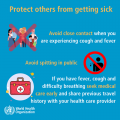Measles is a respiratory disease caused by a virus. It is also called rubeola.
Signs and Symptoms
1st Sign – high fever, which begins about 10 to 12 days after exposure to the virus that can last 4-7 days.
What can you expect?
- runny nose and cough
- red and watery eyes
- small white spots with bluish-white center inside the cheeks (Koplik’s spots)
After Several Days – blotchy rash erupts on the face and upper neck
After another three days – the rash spreads, eventually reaching the hands and feet and lasts for 5-6 days, and then fades. On average, the rash occurs 14 days after exposure to the virus (within a range of 7-18 days)
Transmission
The highly contagious virus is spread by:
- Sneezing and Coughing
- Close personal contact or direct contact with infected nasal or throat secretions
The virus remains active and contagious in the air or on infected surfaces for up to 2 hours. It can be transmitted by an infected person from 4 days prior to the onset of the rash to four days after the rash erupts.
Measles is a disease of humans; measles virus is not spread by any other animal species.
Complications
- pneumonia
- encephalitis
- miscarriage
- ear infections
- diarrhea
- premature birth
Prevention
To prevent measles, children (and some adults) should be vaccinated with the measles, mumps, and rubella (MMR) vaccine. 2 doses of this vaccine are needed for complete protection.
If these signs and symptoms exist consult a Doctor.
Source:
AVEGA Medical Bulletin
AVEGA Managed Care, Inc.



 (4 votes, average: 4.00 out of 5)
(4 votes, average: 4.00 out of 5)









